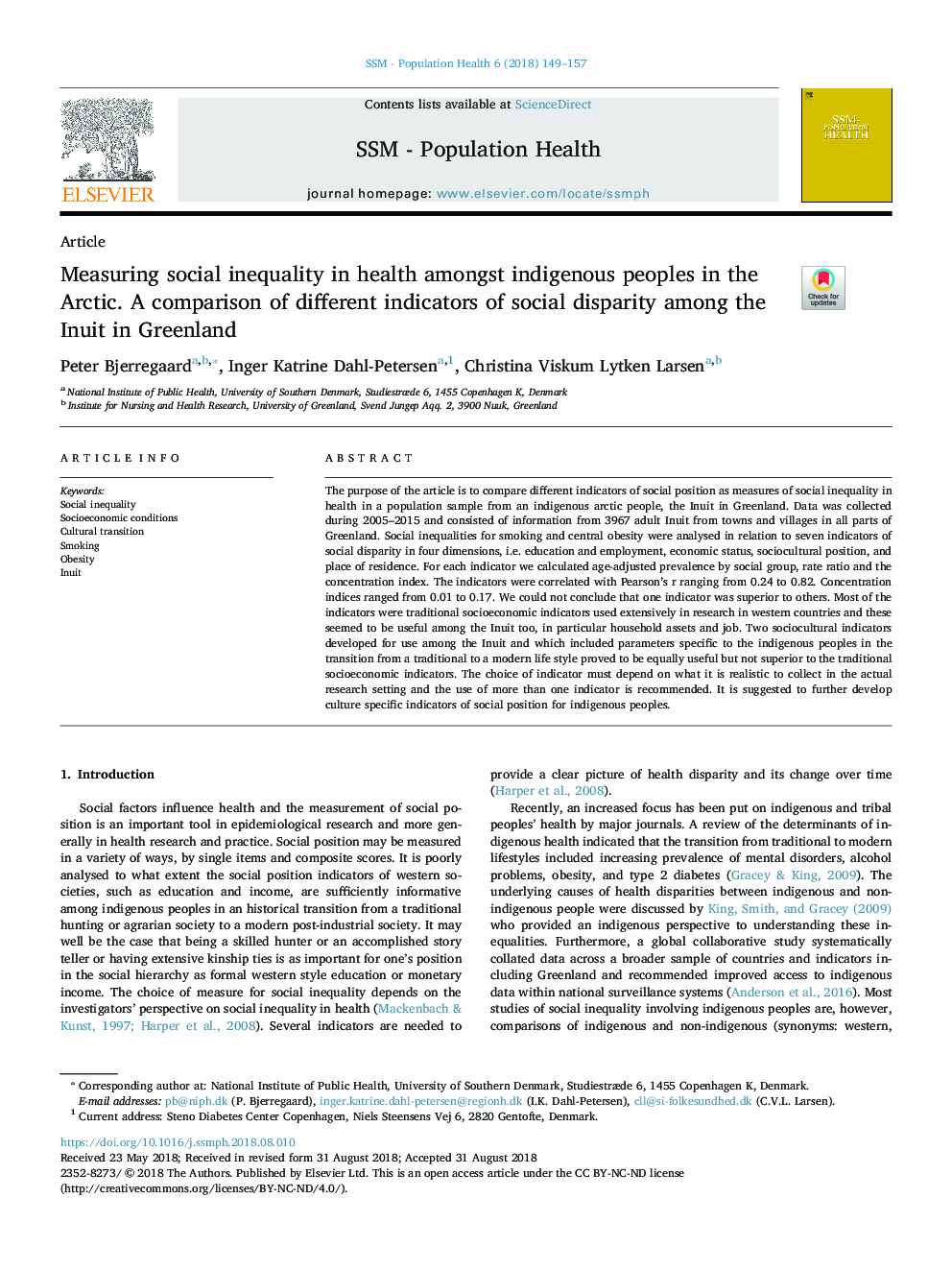| Article ID | Journal | Published Year | Pages | File Type |
|---|---|---|---|---|
| 11005552 | SSM - Population Health | 2018 | 9 Pages |
Abstract
The purpose of the article is to compare different indicators of social position as measures of social inequality in health in a population sample from an indigenous arctic people, the Inuit in Greenland. Data was collected during 2005-2015 and consisted of information from 3967 adult Inuit from towns and villages in all parts of Greenland. Social inequalities for smoking and central obesity were analysed in relation to seven indicators of social disparity in four dimensions, i.e. education and employment, economic status, sociocultural position, and place of residence. For each indicator we calculated age-adjusted prevalence by social group, rate ratio and the concentration index. The indicators were correlated with Pearson's r ranging from 0.24 to 0.82. Concentration indices ranged from 0.01 to 0.17. We could not conclude that one indicator was superior to others. Most of the indicators were traditional socioeconomic indicators used extensively in research in western countries and these seemed to be useful among the Inuit too, in particular household assets and job. Two sociocultural indicators developed for use among the Inuit and which included parameters specific to the indigenous peoples in the transition from a traditional to a modern life style proved to be equally useful but not superior to the traditional socioeconomic indicators. The choice of indicator must depend on what it is realistic to collect in the actual research setting and the use of more than one indicator is recommended. It is suggested to further develop culture specific indicators of social position for indigenous peoples.
Related Topics
Social Sciences and Humanities
Social Sciences
Health
Authors
Peter Bjerregaard, Inger Katrine Dahl-Petersen, Christina Viskum Lytken Larsen,
